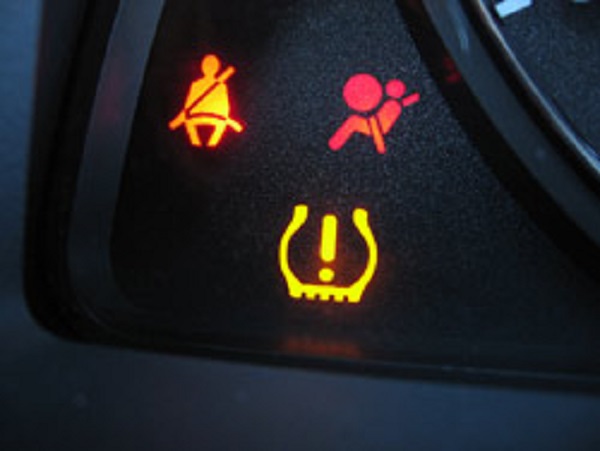Low tire pressure? Warning signs you can’t ignore
On a recent service visit, a young couple shared the adventures they had on a recent weekend road trip. Their destination: a favorite apple orchard. Before they left, they filled up the gas tank, checked the oil, buckled in the kids and took off.
However, a glowing orange light on their dash almost ruined their trip. They were savvy enough to check their owner’s manual and learned this was the tire pressure light, which was telling them one or all of their tires could be low.
After they pulled over and found the tire pressure to be within the normal range, they were off again to continue their apple-picking adventure.This light that usually looks like an exclamation point (!) is a warning indicator sign that your tire pressure may be low. With fluctuating temperatures as the season changes from summer to fall, dramatic changes in temperatures from daytime to nighttime can cause false low tire pressure warnings.
Why did the warning light go on if the tire pressure was fine?
Federal law required that all passenger cars and trucks beginning in model year 2006 be equipped with a Tire Pressure Monitoring System or TPMS. This system alerts drivers when the tire pressure dips about 25 percent below the recommended specification. Some vehicles will trigger the TPMS light at less than 25 percent.
Unstable temperatures cause tire pressure changes

If you or your auto shop last set the tire pressure when it was 90-plus degrees outside, imagine what it drops to when the overnight temperatures fall into the mid-40s. Your tire pressure could be changing 4-5 psi at night, which can cause the TMPS light to go on.
What to do when your TPMS indicator lights goes on:
- Check and adjust your tire pressure in the morning before the temperatures heat up and cause a false bump to the psi level of the tires.
- In most vehicles, your TPMS light will turn itself off once you’ve properly inflated the tires. (You may need to drive for a few minutes or miles first. Every vehicle varies slightly.) However, if your light is persistent, Hong Kong Auto Service can help.
We’ll make sure the system is operating properly, and we can reset the light for you. In most cases, we can reset it within minutes. In a few cases, we may have to go through a series of steps, including meeting specific driving conditions. There may be a minimal cost charged in those instances.
If you have any questions or the TPMS light is on consistently, please call us at 847-251-0300, schedule an appointment online, or stop by. Underinflated tires mean lower fuel economy, reduced safety and faster tire wear.

![Beautiful family driving in the car during winter season. They are surrounded by snow. [url=http://www.istockphoto.com/search/lightbox/9786778][img]http://img143.imageshack.us/img143/364/familyyv.jpg[/img][/url] [url=http://www.istockphoto.com/search/lightbox/9786682][img]http://img638.imageshack.us/img638/2697/children5.jpg[/img][/url]](/wp-content/uploads/2015/09/istock_000017572982xsmall.jpg?w=300)